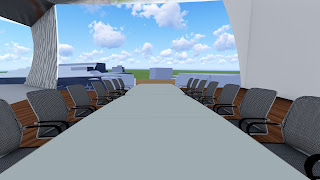Tuesday 28 June 2016
Tuesday 31 May 2016
Experiment 3 - Draft
Initial idea sketches:
Inspirations:

Adopting the structure of a termite nest, the building achieves stack ventilation.
Learning Hub / Heatherwick Studio

Draft model:
Tuesday 24 May 2016
Sunday 15 May 2016
EXP 3- Article Mashup
Architects have much more relevant goals in mind than
creating buildings that stretch into the heavens or topple over each other like
weightless blocks, many are attempting to solve today's problems -- resource
scarcity, overpopulation, decaying infrastructure, poor transportation. When nature has a problem, evolution weeds out
what doesn’t work and selects the most effective adaptations. Biomimicry has been helping
inventors, designers and architects innovate in genius ways for centuries , its
value has become even more apparent in the past few years as we realize that
Mother Nature is one of the universe's most incredible designers. architects facing a design dilemma could address problems by using biomimicry —
examining nature’s solutions and applying them to human designs, devising
the schools, assisted living centers, museums and residences of tomorrow. The
results can be physically fantastical, but most often, it's the problem-solving
behind a design that blows our minds.
Reference:
1. http://www.huffingtonpost.com.au/entry/world-architecture-festival-2015_us_56421094e4b0b24aee4bd18e?section=australia
2. http://www.ft.com/intl/cms/s/0/e2041a1e-0d32-11e6-b41f-0beb7e589515.html
3. http://inhabitat.com/how-biomimicry-can-help-designers-and-architects-find-inspiration-to-solve-problems/
Tuesday 3 May 2016
Experiment 2- Final images
Final Images
Other Images:
On the top of the shelter of the light rail stop is a garden of vines and flowers, not only are they ornamental to the design, they provide shading for the space as they climb and twist around the mesh grids. Not only will this improve the atmosphere with soft casting sunlight through the leaves but also the experience of waiting for the light rail and emphasizing the beauty of nature.
As rain fall onto the roof top garden, hidden pipes carries the excess water down towards the ground to prevent flooding and also directing water to the plants under the shelter, water could also be recycled and filtered to provide drinking fountains at the station.
Both the mesh grid and the fence are designed to be made out of recycled plastic, while being durable and easily maintained, they can be recycled and reused again.
As an observation; some people likes to have a little snack or drink as they wait for public transport and because some foods are not allowed on public transport, a bin is conveniently located at the entrance so people can expose any unwanted rubbish before boarding the light rail in prevention of littering.
Experiment 2- Concepts and Theme
Electroliquid Aggregation
Porosity of surface/ space.
+
Expressing the fluid material property of concrete through form.
=
Exploring the possibilities of fluid space through the use of porous forms and materials.
Fornes evolves the possibilities of space through the creation of pavilion like, undulating, overarching structures that are never enclosed. His forms enable unrestricted circulation, whilst having some form of a divider of space, the space is always continuous and fluid. Not only are his structures porous in plan but also in their chosen materials, mediating the inside and out, adding dynamism to the experience of the space.
Niemeyer on the other hand, drawn towards communism offered monumental structures that expresses a notion of wholeness with the fluid property of concrete. By strategically placing each joint Niemeyer achieves continuous surfaces thus an illusion of "unity" where the distinction of each element is blurred.
With the two concepts combined, I hope to explore the porosity of structure and material in my light rail stop design, eventually achieving an open plan that allows dynamism and a structure that unifies its elements.
With the two concepts combined, I hope to explore the porosity of structure and material in my light rail stop design, eventually achieving an open plan that allows dynamism and a structure that unifies its elements.
Chosen Theme
Sustainability
The awareness of sustainability of UNSW students needs to be raised and addressed. With the rapid growth of urbanization and fast paced city lifestyle, man tends to forget about the natural elements in life thus ignorant of the present problems countered by our environment today. To stimulate appreciation and interest of nature amongst our students, my light rail stop design attempted to feature components that will hopefully note the importance of nature.
The awareness of sustainability of UNSW students needs to be raised and addressed. With the rapid growth of urbanization and fast paced city lifestyle, man tends to forget about the natural elements in life thus ignorant of the present problems countered by our environment today. To stimulate appreciation and interest of nature amongst our students, my light rail stop design attempted to feature components that will hopefully note the importance of nature.
Subscribe to:
Posts (Atom)


















































